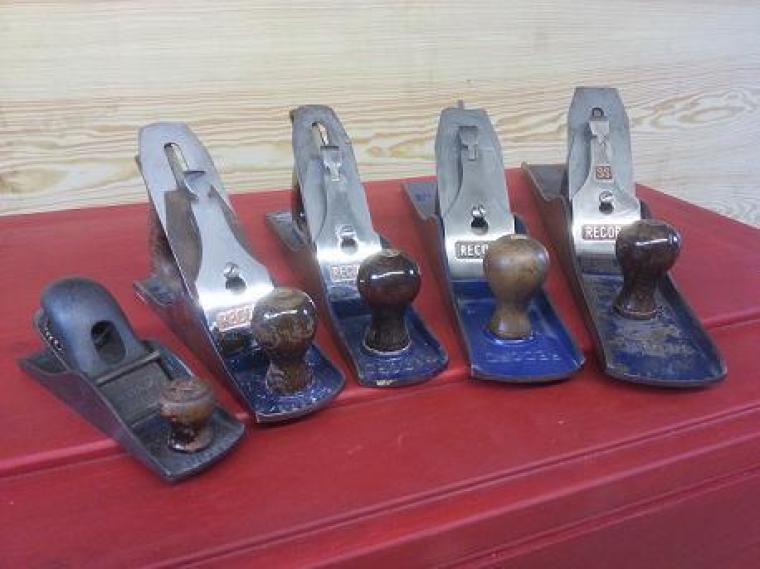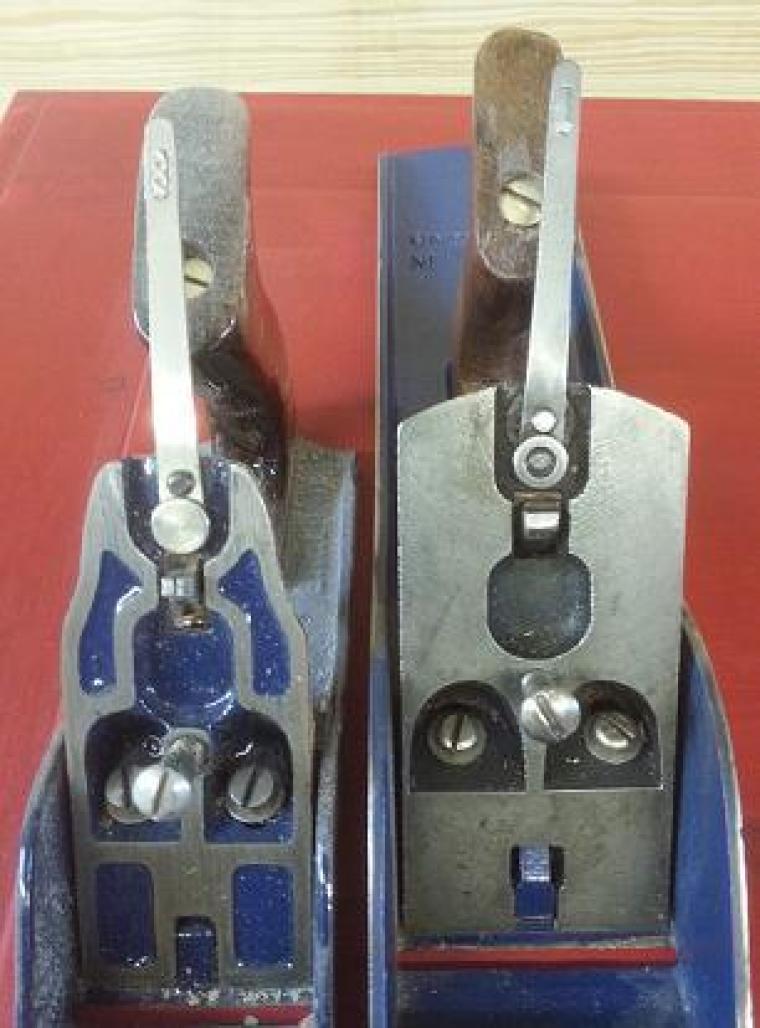Bench Planes
With the tool chest done it’s now time to turn my attention to preparing my tools for their new home. No tool chest would be complete without the essential bench planes needed by the joiner. I would have very much liked to of invested in some premium planes from Lie-Nielsen or Clifton. Sadly for me my budget can’t stretch that far, or maybe that’s a good thing……..
The afore-mentioned companies do indeed make some wonderful tools, full of craftsmanship and attention to detail, but are the antique or vintage planes available from auction sites or car boot sales really that bad?
The metal bodied planes most of us are familiar with exist thanks to the design of Leonard Bailey. Little has changed from the original 1860 “Bailey” type plane and how it works.
Many of these early planes are very desirable and fetch high prices, however if we move the clock forward we find tools that are more within the reach of the typical woodworker. My personal preference is to look for planes no newer than the very early 1960’s. Although that sounds a potentially difficult task it’s not, just browse the auction sites and car boot sales. The main reason to look for the older planes is because they were generally better made. That’s not to say more modern versions will not perform very well, it’s more the components used in the earlier type are of a better quality and therefore more desirable.
Let’s take a look at the planes I purchased. From left to right we have a Block Plane, No4 Smoothing Plane, No5 Jack Plane, No6 Fore Plane, No7 Try/Jointer Plane. I went for the Record brand as they were equal to Stanley in terms of quality, UK made and from a personal and irrelevant point of view I like the blue paint. This collection set me back about £200.00 including delivery charges. Ok, so not cheap, but just to contrast a set of Lie-Nielsen planes would have cost £1391.00. All but the No6 will live in the tool chest.

Next let’s consider why the older bench planes are more desirable. Firstly the frog. The frog supports and holds the blade at the appropriate angle. Premium planes have a traditional frog consistent with early planes with lots of surface area to support the blade, this is also present on the vintage bench planes I purchased. The only difference between my vintage plane frog and the premium versions is that mine are not the “Bedrock” design. The Bedrock was a Stanley design where the frog is more solidly mounted to the body of the plane. Next up is the Y lever and just the general quality of components. As you can see from the picture the vintage Y lever is a solid item whereas the newer plane has a cheaper pressed item. The lateral adjustment arm too is often less sturdy on modern offerings. That’s not to say the newer planes with alternative components wont work or they are vastly inferior (more of that soon with vintage vs budget plane), I just wanted the desirable features of the premium brands but without the heavy price tag. And that’s about it! After all they are simple tools

Now to prepare them, each plane will require some elbow grease to get them operating at their best and that’s the rub. If you have the money to buy the premium brands you will have something that will work right out of the box with only the minimum of attention. But that’s OK by me, I’m happy to put some time in and save some cash, although maybe a Lie-Nielsen of Clifton No4 could be the best Christmas/Birthday combined present ever…..
